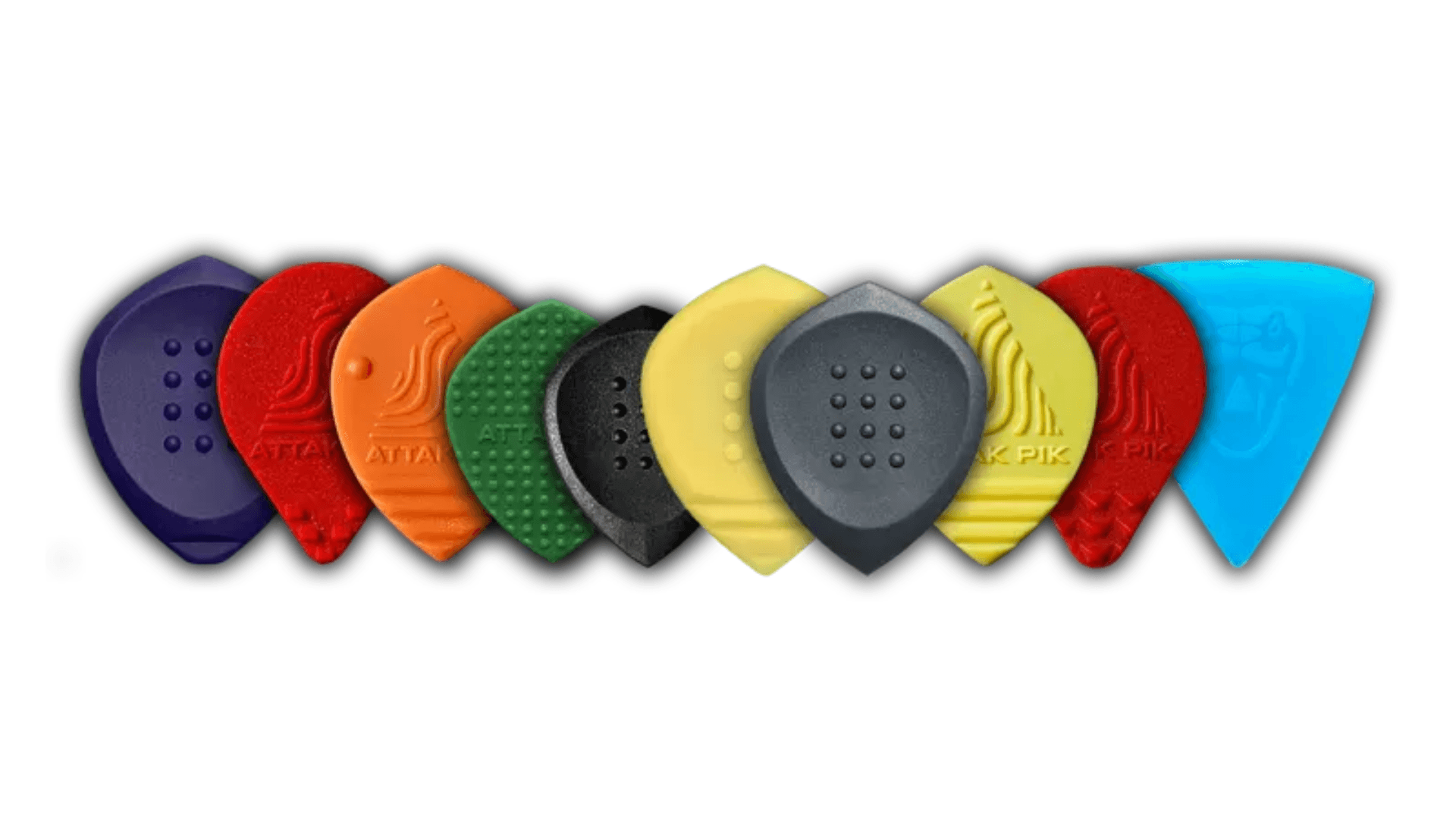Picking the right guitar pick might seem like a small decision, but it can make a big difference in how you play and sound! Whether you’re strumming away on an acoustic or shredding on an electric, the right pick can help you feel more comfortable and bring out the best in your tone.
With so many options out there—different thicknesses, materials, shapes, and sizes—how do you know which one to choose? Let’s break it down and help you find the perfect pick for your playing style!
1. Pick Thickness – How Thick Should Your Pick Be?

Pick thickness (or gauge) affects both playability and tone. Here’s a quick guide:
🔹 Thin (Light) – Up to 0.60 mm
Great for strumming! These flexible picks produce a bright, snappy sound, making them ideal for acoustic players. But if you’re into fast lead playing, they might feel too flimsy.
🔹 Medium – 0.60 mm to 0.80 mm
A good all-rounder. Medium picks give you enough flexibility for rhythm playing while still offering control for single-note lines.
🔹 Heavy (Thick) – 0.80 mm and above
Perfect for precision and power! If you love playing solos, metal riffs, or jazz lines, thicker picks provide better control and a fuller tone.
Tip: If you’re not sure, start with a medium pick and experiment from there!
2. Material – What’s Your Pick Made Of?

The material of your pick affects how it feels in your hand and the sound it produces. Here are some common choices:
Celluloid – Classic vintage tone but wears out faster.
Nylon – Flexible, durable, and often textured for better grip.
Tortex (Delrin) – A popular choice for durability and balanced tone.
Ultem (Ultex) – Bright, crisp sound with extra stiffness for control.
Metal, Wood, Stone – Unique, but may be harder to play with and wear down strings faster.
Tip: If you keep dropping your pick, try one with a textured grip!
3. Shape & Size – Finding the Right Fit
Picks come in all shapes and sizes. Here’s how to choose:
Standard (Classic Teardrop) – The most common shape, great for all-around playing.
Small Jazz Picks – Great for speed and precision.
Large Triangle Picks – More surface area for grip, popular among bassists.
Sharp or Pointed Picks – Ideal for fast, articulate playing.
Tip: If you’re a beginner, start with a standard pick. As you gain experience, you might prefer a different shape for better control.
4. Does Grip Matter? Absolutely!

Some picks have a smooth surface, while others have raised textures or rubberized grips to help them stay put. If your pick keeps slipping, try one with a textured surface or a small hole in the center for extra grip.
So, Which Pick Should You Choose?
There’s no one-size-fits-all answer—it really comes down to what feels best for YOU! If you’re just starting, grab a variety pack and try different picks to see what works.
💡 Want a warm, mellow tone? Try a thicker pick.
💡 Need a bright, snappy sound? A thin pick might be your best bet.
💡 Love fast, technical playing? A small, stiff pick could help with speed and accuracy.
At the end of the day, your pick is a small but mighty tool that helps shape your sound and playing experience. Experiment, have fun, and rock on!

